Disclosure: This article contains affiliate links. We may earn a commission from purchases at no extra cost to you, which helps our travel content.
The morning fog was still dancing around the Golden Gate Bridge when I set up my tripod at Battery Spencer. As the first light broke through, painting the iconic red structure in a warm glow against the silvery mist, I remembered why San Francisco had captured my heart years ago. This city exists in a perfect tension between natural beauty and human innovation – much like the balance I've sought between my engineering mind and artistic soul. Since moving from Brazil to Japan, I've developed a deeper appreciation for places that blend cultural complexity with visual splendor. San Francisco does this effortlessly, offering endless compositions for photographers from the famous landmarks to the hidden corners where locals live their stories. Whether you're wielding a professional camera or simply your smartphone, this city rewards those who seek its light. Vamos explorar – let's explore San Francisco's most photogenic spots together.
Golden Hour at the Golden Gate
There's something poetic about capturing golden light on the Golden Gate Bridge – a symmetry that feels almost too perfect. After five visits to San Francisco, I've learned that this iconic structure transforms dramatically with changing conditions, offering something new each time you photograph it.
My favorite vantage point remains Battery Spencer in Marin County. Arriving 45 minutes before sunrise requires an early alarm and a drive through the pre-dawn darkness, but the reward is unparalleled – you'll likely have the viewpoint mostly to yourself, save for a few dedicated photographers nodding in silent camaraderie. The way the bridge emerges from the fog, revealing itself gradually as daylight strengthens, creates a series of compositions that evolve minute by minute.
For sunset shots, Baker Beach provides a different perspective, with the bridge framed against the Pacific horizon. The wide sandy shore gives ample space to experiment with compositions – try including beachgoers for scale or focusing on the waves with the bridge as a distant element. I've spent entire evenings here, my camera tripod planted firmly in the sand, capturing the changing colors as day transitions to night.
Marshal's Beach, slightly more secluded than Baker, offers a similar view but with fewer crowds. The rocky foreground elements create natural leading lines toward the bridge – perfect for creating depth in your images. Just watch the tide charts before visiting, as high tide can significantly reduce your shooting space.

💡 Pro Tips
- Visit on weekdays for fewer crowds, especially at popular viewpoints like Battery Spencer
- Use a neutral density filter to capture longer exposures of fog movement around the bridge
- Check fog forecasts on apps like Fog Today before planning your golden hour shoot
The Painted Ladies: Beyond the Postcard Shot
Everyone knows the classic Full House view of the Painted Ladies from Alamo Square Park – and yes, it's worth capturing. But after spending an afternoon exploring this area with my camera, I discovered there's so much more to photograph than the standard postcard shot.
Arrive at Alamo Square in late afternoon when the Victorian facades glow with warm light. The classic view from the park's hill is popular for good reason, offering a juxtaposition of historic architecture against downtown skyscrapers that tells San Francisco's story in a single frame. But once you've captured that shot, walk down to street level and explore the details of these colorful homes.
The ornate woodwork, intricate window frames, and vibrant color combinations reward photographers who take time to look closely. I spent nearly an hour focusing on architectural details with my telephoto lens, isolating decorative elements that showcase the Victorian craftsmanship. These close-up architectural studies often become my favorite images, revealing the city's character beyond its famous skyline.
For something different, walk the surrounding blocks where equally impressive Victorian and Edwardian homes stand without the crowds. The Lower Haight and Hayes Valley neighborhoods offer similar architectural richness with fewer photographers to navigate around. I particularly love Steiner Street between Fulton and McAllister, where a row of colorful Victorians catches afternoon light beautifully, and you'll likely have the scene to yourself.
If you visit during spring, look for blooming trees and flowers to incorporate into your foreground – these seasonal elements can transform a standard architectural shot into something special that captures the specific moment of your visit.

💡 Pro Tips
- Visit on weekdays around 4-6pm for good light with fewer tourists
- Bring a polarizing filter to reduce glare on windows and enhance the vibrant paint colors
- Look for unique framing opportunities using trees in Alamo Square Park
Urban Geometry: Chinatown & Financial District
Growing up in São Paulo's concrete jungle gave me an appreciation for urban photography that I've carried throughout my travels. San Francisco's Chinatown and Financial District offer a fascinating study in contrasting architectural styles and cultural expressions – perfect for photographers drawn to geometric patterns and street life.
Start your urban exploration on Grant Avenue in Chinatown during the morning when merchants are setting up for the day. The iconic Dragon Gate at Bush Street marks your entry into the oldest Chinatown in North America. Rather than just photographing the gate head-on like most tourists, try positioning yourself to one side to capture both the structure and the street life beyond, creating context and depth.
As you wander deeper into Chinatown, look upward to capture the distinctive red lanterns against the blue sky – this simple composition creates striking color contrast. The narrow streets with hanging lanterns create natural leading lines that draw the viewer's eye through your image. I found some of my most compelling shots by focusing on the everyday moments: elderly residents playing chess in Portsmouth Square, the meticulous arrangement of produce at market stalls, or the steam rising from dim sum baskets.
For a completely different aesthetic, walk toward the Financial District where glass skyscrapers create canyon-like streets. The Transamerica Pyramid offers endless compositional possibilities as you move around it, using surrounding buildings to frame this iconic structure. For abstract architectural shots, visit the Embarcadero Center, where geometric patterns and reflections create mind-bending perspectives.
One of my favorite discoveries was the contrast between old and new at the intersection of California and Montgomery Streets, where historic buildings stand alongside modern glass towers. This juxtaposition tells the story of San Francisco's evolution better than words ever could.

💡 Pro Tips
- Visit Chinatown early morning (7-9am) or late afternoon for the best light and active street scenes
- Look for reflections in the Financial District's glass buildings, especially after rain
- Use a wide-angle lens to capture the verticality of downtown streets
Coastal Magic: Sutro Baths & Lands End
The collision of land and sea creates some of San Francisco's most dramatic landscapes, and nowhere is this more evident than at Sutro Baths and Lands End. This area reminds me of certain coastal regions in my native Brazil – wild, rugged, and constantly changing with the light and tides.
The ruins of Sutro Baths offer a photographer's playground of textures, reflections, and history. Arriving for golden hour (either sunrise or sunset), I found myself mesmerized by how the concrete ruins frame views of the Pacific, creating natural leading lines toward the horizon. The pools fill and empty with the tides, sometimes creating perfect reflections of the sky above.
For the best shooting experience, I recommend arriving about an hour before sunset with your filter set to manage the challenging light conditions. The neutral density filters allow for longer exposures that smooth the ocean's surface, while polarizers cut glare and enhance the rich colors of sunset. This location gets busy at sunset, so stake out your composition early.
From Sutro Baths, follow the Coastal Trail toward Lands End for views of the Golden Gate Bridge from a less photographed angle. The trail offers numerous vantage points where twisted cypress trees frame the bridge in the distance – these natural frames add depth and context to your images. The shipwrecks visible at low tide near Mile Rock Beach provide fascinating foreground elements for wide-angle compositions.
What I love most about this area is how quickly conditions change. I've watched fog roll in within minutes, transforming a clear sunset scene into something mysteriously ethereal. These rapid transitions challenge your photographic reflexes but reward patience with truly unique images. Don't pack up immediately after sunset – the blue hour here offers a magical quality of light as the last glow illuminates the ocean mist.
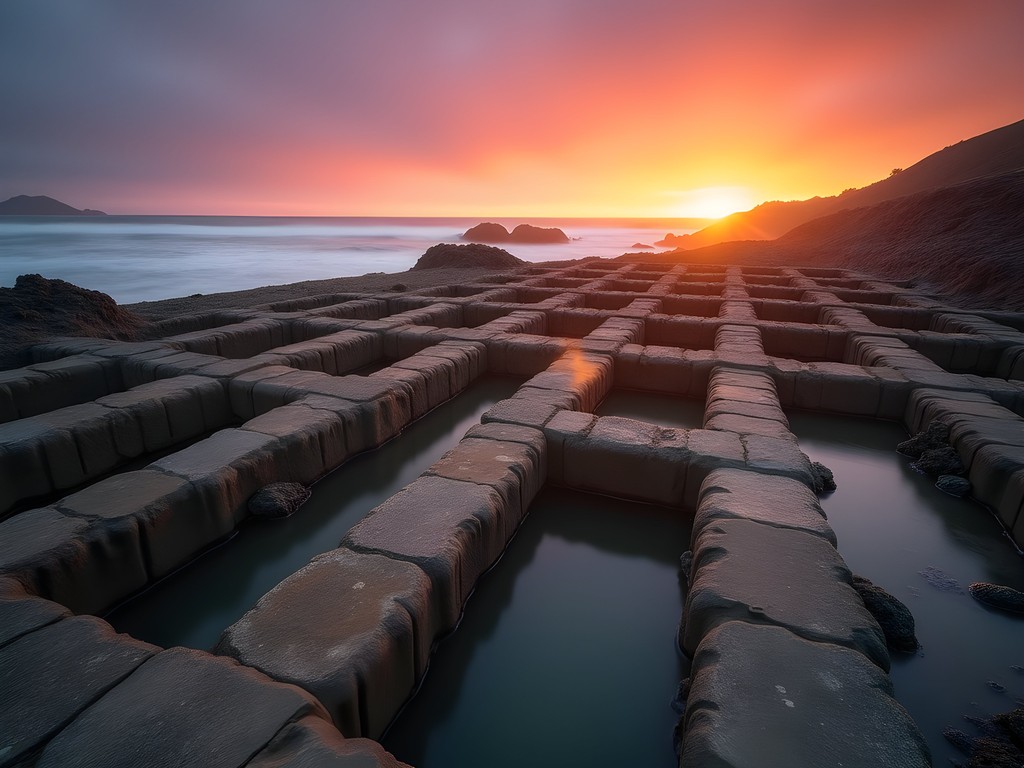
💡 Pro Tips
- Check tide schedules before visiting – lower tides reveal more of the ruins and create tide pools with reflections
- Bring a headlamp for safely navigating the rocks if you stay past sunset
- Use a graduated neutral density filter to balance exposure between bright sky and darker foreground
Hidden Urban Treasures: Alleys & Street Art
Beyond the postcard views, San Francisco reveals its true character through its network of alleys, stairways, and vibrant street art. As someone who's lived in both the sprawling chaos of São Paulo and the ordered precision of Osaka, I find myself drawn to these in-between spaces where creativity flourishes outside the mainstream.
The Mission District stands as San Francisco's epicenter of mural art. Balmy Alley and Clarion Alley showcase stunning large-scale works addressing everything from cultural heritage to political resistance. When photographing these vibrant murals, I prefer visiting in the late morning when the sun has risen high enough to illuminate the artworks but before harsh midday shadows create problematic contrast. Occasionally including pedestrians in your compositions adds scale and human interest to these colorful backdrops.
For a different aesthetic, explore the Financial District's narrow passages like Belden Place, where European-style café seating creates a scene reminiscent of Paris or Lisbon. The contrast of intimate dining spaces against towering skyscrapers makes for compelling visual storytelling. Visit during lunch hours when the alley buzzes with energy or in the evening when string lights create a magical atmosphere.
Some of my favorite discoveries have been San Francisco's historic stairways. The Filbert Steps cutting through the eastern slope of Telegraph Hill offer not just spectacular views but also access to hidden gardens and historic cottages dating back to the 1800s. The 16th Avenue Tiled Steps in the Inner Sunset neighborhood transform a functional urban element into a mesmerizing work of art – visit midday when the sun fully illuminates the intricate tilework.
For urban explorers with a sense of adventure, the compact camera has been my perfect companion for these wanderings. Its unobtrusive size lets me capture candid street scenes while the large sensor ensures professional image quality, even in challenging lighting conditions. The wide-angle lens excels in tight urban spaces where larger cameras might feel cumbersome.
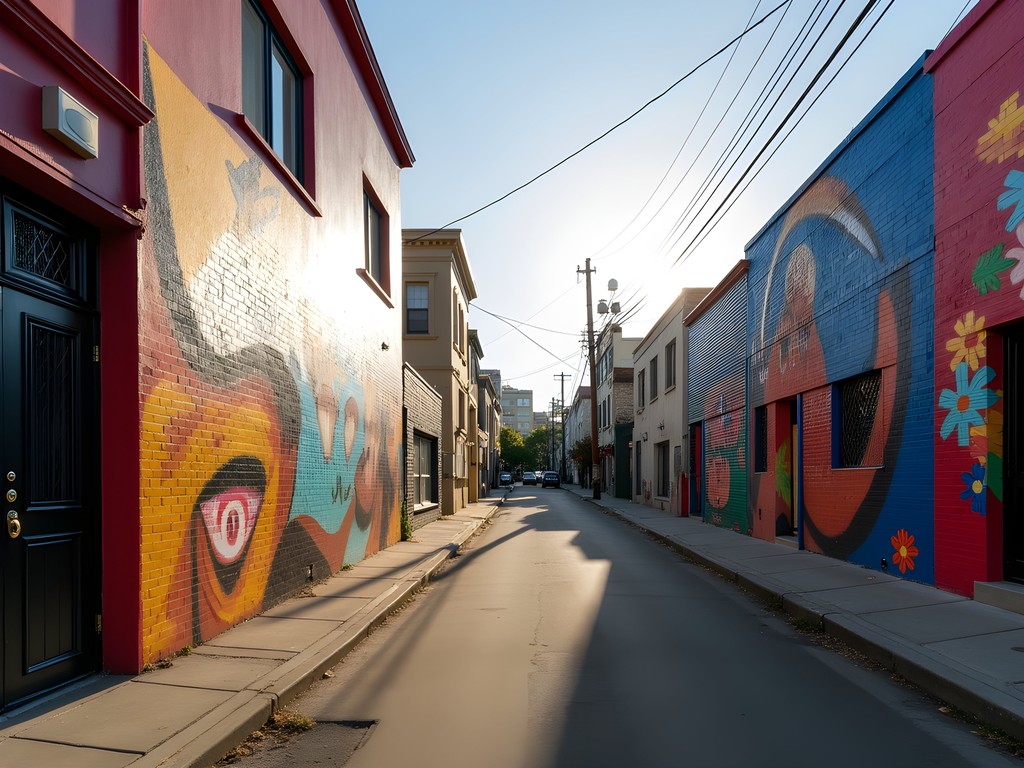
💡 Pro Tips
- Visit the Mission District murals before 11am for good light without harsh shadows
- Respect local residents when photographing in residential areas like the Filbert Steps
- Bring a lens with versatile focal range for quickly changing between detail shots and wider contextual images
Final Thoughts
As I packed away my camera after a final blue hour session at the Palace of Fine Arts, I reflected on what makes San Francisco such a captivating subject. Like the best portraits, this city reveals different facets of itself depending on how you approach it – sometimes bold and dramatic, other times intimate and subtle. The technical engineer in me appreciates the precision of its iconic structures, while my artistic side connects with its ever-changing light and cultural complexity. Whether you're drawn to architectural marvels, natural landscapes, or human stories, San Francisco offers endless compositions waiting to be discovered. The city rewards those who rise early, stay out late, and venture beyond the obvious shots. As we say in Brazil, a beleza está nos detalhes – beauty lies in the details. I hope these suggestions inspire your own photographic journey through this remarkable city. Remember that the best camera is the one you have with you, and the best photograph is often the one you make after deciding to walk just a little further, stay just a little longer, or look from just a slightly different angle.
✨ Key Takeaways
- Visit iconic locations during golden hour for the most magical light
- Explore beyond the postcard shots to discover San Francisco's authentic character
- Pay attention to weather patterns – fog can transform ordinary scenes into extraordinary photographs
- Balance your time between planned iconic shots and spontaneous urban exploration
📋 Practical Information
Best Time to Visit
Year-round, though September-October offer clearest skies
Budget Estimate
$150-250 per day including mid-range accommodation
Recommended Duration
5-7 days
Difficulty Level
Easy
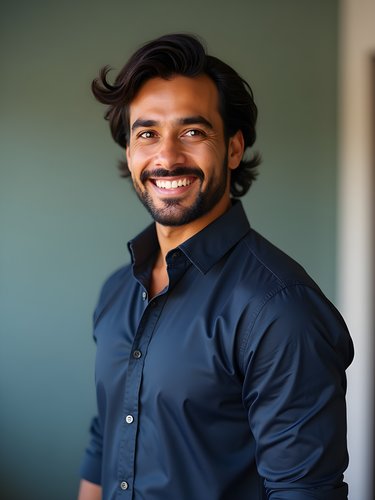
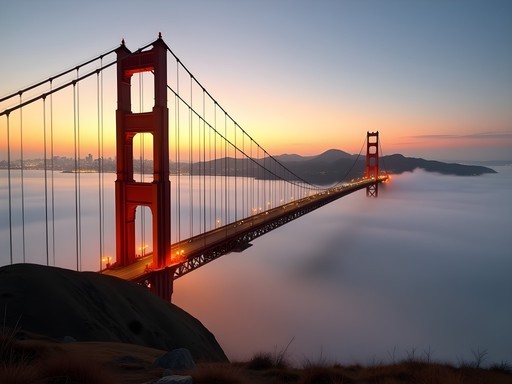
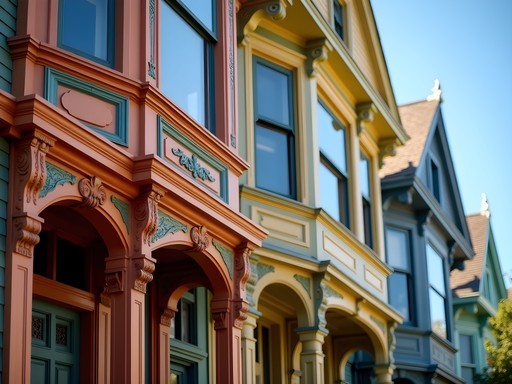

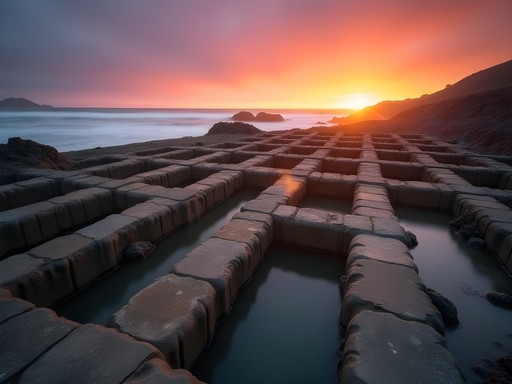



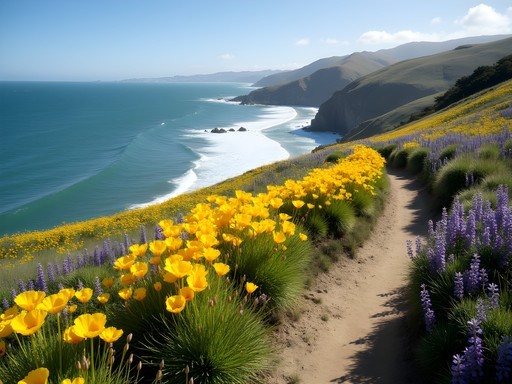
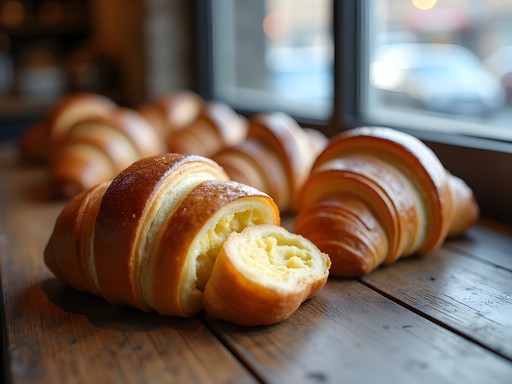
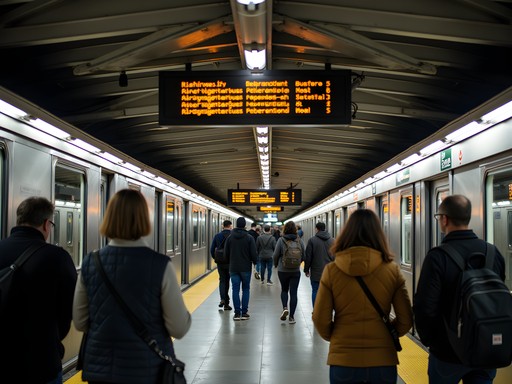
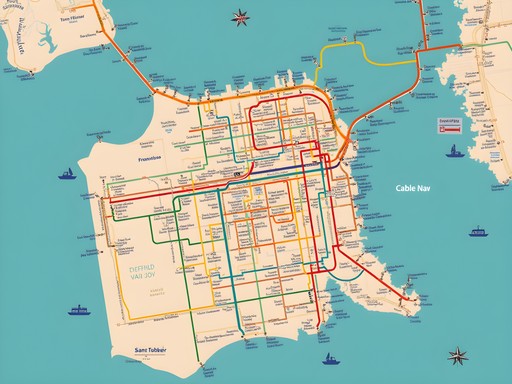

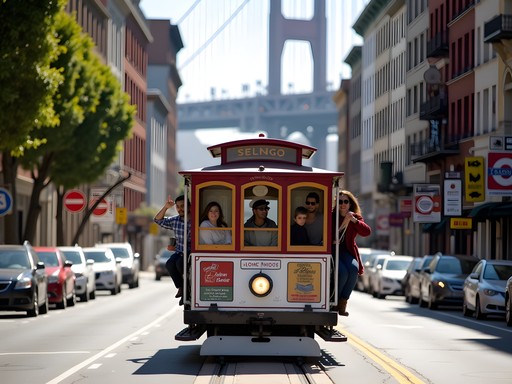
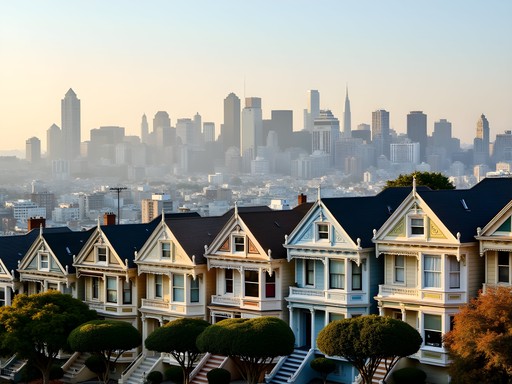
Comments
cali_dreaming
Going to SF next month! What camera settings did you use for the Sutro Baths long exposure?
Marco Sharma
For the Sutro Baths shots, I used f/11, ISO 100, and a 2-second exposure with an ND filter. Bring a tripod for sure!
photo_enthusiast415
If you're heading to the Palace of Fine Arts for that blue hour shot, go on a weekday. Weekends are packed with wedding photoshoots and it's nearly impossible to get a clean shot without people in it.
Marco Sharma
Great tip! I went on a Tuesday evening and still had to wait for gaps between people, but definitely better than weekends.
islandadventurer
Love your Chinatown shots! Those red lanterns against the blue sky are just perfect.
Lillian Diaz
Marco, your shots of the Painted Ladies are giving me serious FOMO! I was there last year but made the rookie mistake of going midday when the light was harsh and the crowds were insane. Your golden hour tip is spot on. For anyone planning to visit, I'd add that there's a little hill across the street at Alamo Square Park that gives you the perfect elevated angle with the city skyline behind. I used my travel tripod which was perfect since it's lightweight but sturdy enough for those longer exposures. The Sutro Baths at sunset is also magical - just bring layers because that coastal wind is no joke!
islandadventurer
Those Sutro Baths look amazing in the photos! Worth visiting even if you're not a photographer?
Lillian Diaz
Absolutely! The ruins have such a mysterious vibe, and the views of the coastline are breathtaking. Great place for a picnic too!
winterguy
That Golden Gate Bridge shot is incredible! What time did you have to get there to catch that perfect morning fog? Planning a trip in June and would love to recreate something similar.
Marco Sharma
Thanks winterguy! I was at Battery Spencer around 5:30am in summer. The fog is most common May-August. Give yourself at least 30 minutes before sunrise to set up. The parking lot fills quickly, even that early!
winterguy
5:30am 😱 The things we do for the perfect shot! Thanks for the tip, I'll set my alarm extra early.
blueninja
That shot of the Painted Ladies with the skyline in the background is INSANE! Was that edited or straight out of camera? Love how you found an angle that's different from what everyone posts.
summerhero
Not Marco, but I'm pretty sure that spot is on the hill in Alamo Square Park. If you climb up to the top rather than staying on the main lawn, you get that elevated perspective!
Douglas Bradley
Excellent guide, Marco. I'd add that the Palace of Fine Arts is particularly stunning around 7-8pm in summer when the light hits the dome just right. I spent three days shooting San Francisco last year and found the city's microclimates fascinating from a photography perspective. One location I'd add to your list is Ina Coolbrith Park - it offers a unique elevated view of the downtown skyline that's less photographed than the typical spots. The steep climb up Taylor Street is worth it, especially for blue hour shots when the city lights begin to twinkle.
starhero
Heading to SF next month! Is Battery Spencer easy to get to without a car? And what time should I arrive for that morning shot?
blueninja
Not Marco but I've done it - you can take an Uber there pretty easily, but getting back can be tricky early morning. I'd arrive about 30 min before sunrise and bring a travel tripod if you have one. The light changes fast!
starhero
Thanks for the advice! Will definitely look into that tripod and plan for an early morning.
summerhero
Just got back from SF last week and hit most of these spots! The Sutro Baths at sunset were magical - way less crowded than I expected. One tip though: the fog at Golden Gate is no joke. We tried three mornings before getting that perfect shot Marco described. Worth the persistence though!
Douglas Bradley
The locals call that fog 'Karl' - it has its own social media accounts! I've found mid-September tends to have clearer mornings if you're planning a return visit.
summerhero
Ha! I didn't know the fog had a name. That explains the 'Karl' t-shirts I saw. Good tip about September - might have to plan another trip!
californiagirl
As a local, you captured our city beautifully! 😍
Venture X
Premium card with 2X miles, $300 travel credit, Priority Pass